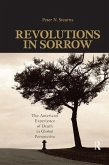Americans in the early 19th century were, as one foreign traveller bluntly put it, "filthy, bordering on the beastly" - perfectly at home in dirty, bug-infested, malodorous surroundings. Many a home swarmed with flies, barnyard animals, dust, and dirt; clothes were seldom washed; men hardly ever shaved or bathed. Yet gradually all this changed, and today Americans are known worldwide for their obsession with cleanliness - for their sophisticated plumbing, daily bathing, shiny hair and teeth, and spotless clothes. In Chasing Dirt, Suellen Hoy provides a colorful history of this remarkable transformation from "dreadfully dirty" to "cleaner than clean", ranging from the pre-Civil War era to the 1950s, when America's obsession with cleanliness reached its peak. Hoy offers here a fascinating narrative, filled with vivid portraits of the men and especially the women who helped America come clean. She examines the work of early promoters of cleanliness, such as Catharine Beecher and Sylvester Graham; and describes how the Civil War marked a turning point in our attitudes toward cleanliness, discussing the work of the U.S. Sanitary Commission, headed by Frederick Law Olmsted, and revealing how the efforts of Florence Nightingale in the Crimean War inspired American women - such as Dorothea Dix, Clara Barton, and Louisa May Alcott - to volunteer as nurses during the war. We also read of the postwar efforts of George E. Waring, Jr., a sanitary engineer who constructed sewer systems around the nation and who, as head of New York City's street-cleaning department, transformed the city from the nation's dirtiest to the nation's cleanest in three years. Hoy details the efforts to convinceAfrican-Americans and immigrants of the importance of cleanliness, examining the efforts of Booker T. Washington (who preached the "gospel of the toothbrush"), Jane Addams at Hull House, and Lillian Wald at the Henry Street Settlement House. Indeed, we see how cleanliness gradually shifted from a way to prevent disease to a way to assimilate, to become American. And as the book enters the modern era, we learn how advertising for soaps, mouthwashes, toothpastes, and deodorants in mass-circulation magazines showed working men and women how to cleanse themselves and become part of the increasingly sweatless, odorless, and successful middle class. Shower for success! By illuminating the historical roots of America's shift from "dreadfully dirty" to "squeaky clean", Chasing Dirt adds a new dimension to our understanding of our national culture. And along the way, it provides colorful and often amusing social history as well as insight into what makes Americans the way we are today.








